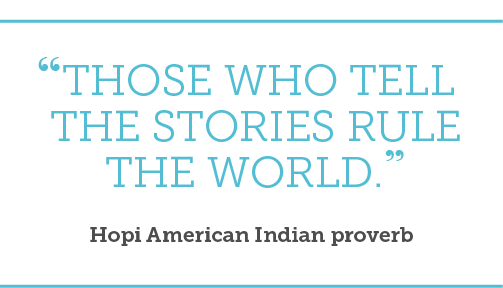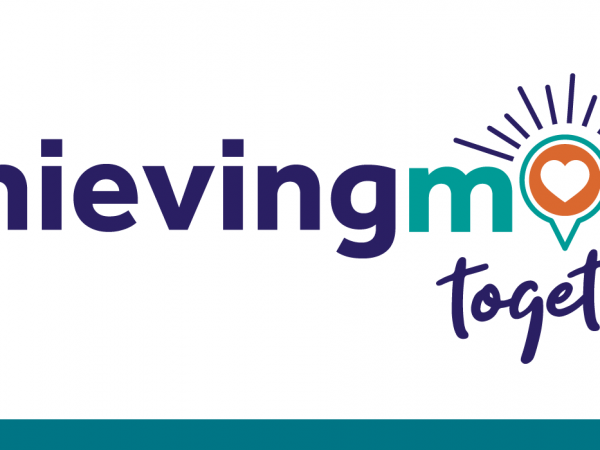
When leaders tell stories, they can capture our hearts, inspire our minds, and ignite the potential to create positive and sustained change for all. Communications extraordinaire Saskia Jones dives into the most timeless genre of storytelling – children’s fiction – and picks out 6 eye-opening lessons it can teach us about shaping stories that last a lifetime.
We use stories to make sense of the world, to tie together our experiences and relate to one another. They influence the way we think, feel, act and behave.
It’s no wonder then, that stories are such a powerful way to engage employees and that leaders are continually being encouraged to be great storytellers. But what makes a good story?

Well, why not start from the beginning. With the stories that shaped our thoughts and perceptions from when we were just a few years old. The stories that will stay with us forever, through a character we related to, or the emotions we felt.
Children’s stories.
They are some of the most powerful communications in existence, with an appeal that often lasts generations.
So what can we learn from them about what makes a gripping story, and how we can use this to help leaders bring stories to life in the workplace?
Supercharge your storytelling skills through the power of visual metaphors with our creative and versatile Storytelling Cards.

With 32 beautiful designs, this pack of cards are an ideal launch pad for a huge number of activities to stimulate constructive storytelling in the workplace, in an education setting or even at home with friends and family.
6 lessons from children’s stories to help leaders become powerful storytellers
Start by introducing a compelling character
The best children’s books have an unforgettable and unique character.
Consider Harry Potter, Mary Poppins or Peter Rabbit. These characters help keep the narrative alive, because you are keen to follow them on the next stage of their journey.
In business, your character could be your customer, beneficiary, or an employee – but crucially, we must empathise with and relate to them.

Then create a conflict
All good story plots are based on conflict and challenge. Here is an example:
Things start off happily. Then the main character has a big challenge to face; his or her story takes you on a rollercoaster ride where the character faces battles, takes risks, fails at first, and ultimately survives – bringing the story to a satisfying resolution.
And this doesn’t have to be in the present. It could be your leader projecting a story about your company’s future – of how your organisation needs to face the difficulties of standing out in saturated markets, and striving to deliver more for less – how will they face these challenges, and adapt to survive?

Reveal the resolution
This might be positive or negative. Stories shouldn’t just exclusively paint a positive picture! Real life has ups and downs – people connect to stories with drama. Vitally, the conclusion should complete the story but also call your audience to action.
Be sure to help people see themselves in the story
The best children’s stories transport you to another world and make you think ‘That could have been me’ or ‘What would I do if that happened to me?’.

Leaders should tell stories of real people in real situations, building empathy, and encouraging us to draw on our own experiences.
Relatable stories help employees see that each one of them can make a difference to achieving the company mission. They tap into their personal aspirations and help them realise that they can move forward as the heroes in their company.

Spark emotions
We remember children’s stories for the sadness, fear or joy we felt whilst we read. As humans, we are hardwired to remember and learn from the emotional impact of stories.
For a CEO or leader to engage and motivate staff, they should share emotional experiences. It is these stories that will make employees’ eyes light up.
And the clincher? Keep it simple!
Look at the language in a children’s book. The short sentences. Short words. Short paragraphs. Children’s stories teach us a lesson in using simple language to great effect.
Consider repetition and alliteration, and make your story easy to repeat and quote from.
Simple wording doesn’t mean lack of depth – consider these words by J. M. Barrie from Peter Pan:
“The moment you doubt whether you can fly, you cease forever to be able to do it.”

Organisations often have multiple, competing messages, and jargon-filled communications. Storytelling can cut through the clutter – delivering a single, clear and compelling message.
Leaders should make stories conversational, not corporate – as if they were sitting around a campfire, not a board room.
If you want staff to feel it in their hearts and talk about it in the corridors, the next time your leader shares a story, consider these six lessons from children’s stories:
1. Create a compelling character
2. Build suspense and drama
3. Reveal the resolution
4. Make it relatable
5. Trigger emotions
6. Keep it clear and concise
So, why wait? Start thinking about how you can use stories in this way today.
Or, in the words of Dr Seuss…
“Kid, you’ll move mountains! Today is your day! Your mountain is waiting. So get on your way!”
Meet the author

Saskia Jones
I am a Communications Consultant and Coach, specialising in internal communications and advising C-suite executives. My latest role was Head of Communications Engagement at Oxfam, responsible for brand, strategy and global internal communications. I have been awarded ‘Internal Communicator of the Year’ at the Institute of Internal Communication Icon Awards. You can learn more about what I do in the IC sphere over on my website.
We were very sorry to hear that Saskia passed away in late 2019. She will be fondly remembered for her contribution to the internal comms sector and will be sorely missed by everyone on the H&H team as well as the industry as a whole.
Read more from Saskia…
Don’t you forget about me: 6 ways to engage remote employees
Let’s get personal: 5 ways senior leaders can become more visible (and how internal comms professionals can help)
Listen up: 10 ways to listen better to employees
5 barriers to effective internal comms measurement
6 easy steps to simplify your internal comms strategy
Get advice from 50 global IC experts on how to support your senior leaders & managers into becoming exceptional communicators.

Download our FREE global report for insights, advice and pointers on how to work with senior leaders & managers to build communication confidence and capability at the top.
Our expert psychologists and copywriters know just what it takes to create meaningful, engaging stories that truly resonate. Get in touch to find out how we can transform your communications through the art of intelligent, creative storytelling!
Got a brilliant idea you simply can’t keep to yourself?
We’re always looking for fresh faces to help us further the IC conversation by writing guest articles for our blog. If you want to make your voice heard on internal comms, employee engagement, change management or leadership development, we’d love it if you got in touch!












